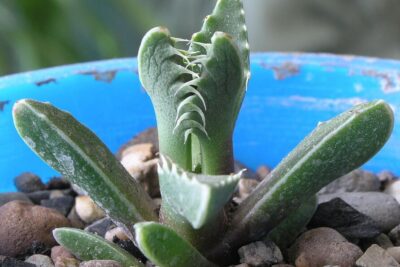
The Causes of Succulent Leaf Loss Upon Touch: A Comprehensive Guide

Succulent plants are known for their thick, fleshy leaves that store water, making them highly adapted to arid environments. These plants have gained immense popularity in recent years due to their unique and eye-catching appearance. However, one common issue that succulent owners often face is the loss of leaves upon touch. Understanding the causes behind this phenomenon is crucial for maintaining the health and beauty of these plants.
In this comprehensive guide, we will delve into the various factors that contribute to succulent leaf loss upon touch. We will explore both physiological and environmental factors that can cause leaves to fall off, including over-watering, physical damage, pests, and diseases. Additionally, we will discuss preventive measures and effective techniques to help prevent and address leaf loss, ensuring that your succulents remain vibrant and thriving. Whether you are a seasoned succulent enthusiast or a beginner, this article will provide you with valuable insights and practical tips to help you care for your succulent plants.
- Avoid touching the leaves of succulent plants excessively
- Provide proper lighting conditions for your succulents to prevent leaf loss
- Ensure adequate watering and drainage to keep succulent leaves healthy
- Protect succulents from extreme temperatures and drafts to prevent leaf loss
- Avoid over-fertilizing succulents to prevent leaf loss
- Handle succulents with care to avoid damaging their leaves
- Protect succulents from pests and diseases to prevent leaf loss
- Provide proper airflow and ventilation to prevent leaf loss in succulents
- Avoid using harsh chemicals or cleaners near succulents to prevent leaf loss
- Provide sufficient space for succulents to grow and avoid overcrowding to prevent leaf loss
- Frequently Asked Questions
Avoid touching the leaves of succulent plants excessively
Excessive touching of the leaves of succulent plants can result in leaf loss, which can be detrimental to the overall health and appearance of your plants. Understanding the causes of succulent leaf loss upon touch is crucial in order to prevent this issue and ensure the longevity of your beloved succulents.
1. Fragile Leaves
Succulent leaves are inherently delicate and prone to damage. They have evolved to store water, making them thicker and more fleshy than leaves of other plant species. However, their plumpness also makes them vulnerable to mechanical stress. When touched or handled roughly, the leaves can easily break or detach from the stem, resulting in leaf loss.
2. Lack of Protective Coating
Succulent leaves often lack a protective coating, such as a waxy cuticle or trichomes, which are tiny hair-like structures. These protective layers help reduce water loss and provide a shield against external elements. Without this natural defense mechanism, succulent leaves are more susceptible to damage when touched. The friction caused by rubbing or brushing against the leaves can lead to leaf loss.
3. Vulnerable Leaf Tips
The tips of succulent leaves are particularly vulnerable to damage. These are the youngest parts of the leaves and are still developing. When touched, the delicate leaf tips may break off, leading to leaf loss. It is essential to handle succulent plants with care, especially near the tips of their leaves, to avoid this type of damage.
 Are Succulent Plants Safe for Cats to Nibble On?
Are Succulent Plants Safe for Cats to Nibble On?4. Preexisting Weakness or Disease
If a succulent plant is already weakened due to factors such as inadequate sunlight, improper watering, or pests, touching its leaves could exacerbate the problem. Weak or diseased leaves are more likely to detach from the plant when subjected to even slight pressure. It is crucial to ensure that your succulents are healthy and robust before handling them to minimize the risk of leaf loss.
5. Overwatering
Overwatering can lead to root rot, which affects the overall health of succulent plants. When the roots are damaged, the plant may compensate by shedding its leaves. Touching the leaves of an overwatered succulent can cause them to detach easily as the plant tries to alleviate stress on its weakened roots.
Excessive touching of succulent leaves can result in leaf loss due to their fragile nature, lack of protective coating, vulnerability of leaf tips, preexisting weakness or disease, and overwatering. It is essential to handle succulent plants with care and avoid unnecessary contact with their leaves to maintain their health and beauty.
Provide proper lighting conditions for your succulents to prevent leaf loss
One of the main causes of succulent leaf loss upon touch is inadequate lighting conditions. Succulents require ample sunlight to thrive and maintain their healthy foliage. When they are not exposed to enough light, they may become weak and prone to leaf loss.
For indoor succulents, it is essential to place them near a bright window where they can receive at least six hours of indirect sunlight per day. If natural light is limited, you can also use artificial grow lights specifically designed for plants to provide the necessary light intensity.
On the other hand, outdoor succulents should be positioned in areas with full or partial sun exposure. Keep in mind that different succulent species have varying light requirements, so it is crucial to research the specific needs of your succulent to ensure you are providing the appropriate lighting conditions.
 Causes of White Film on Succulent Leaves: A Comprehensive Guide
Causes of White Film on Succulent Leaves: A Comprehensive GuideIn addition to ensuring sufficient light exposure, it is essential to monitor your succulents for any signs of sunburn. If the leaves start turning brown or yellow, it may indicate that they are receiving too much direct sunlight. In such cases, consider providing some shade or moving the plants to a location with less intense sunlight.
Tips:
- Rotate your indoor succulents regularly to ensure even light distribution and prevent them from leaning towards the light source.
- Observe your succulents closely and make adjustments to their lighting conditions if you notice any signs of stress or leaf loss.
By providing proper lighting conditions, you can significantly reduce the chances of succulent leaf loss upon touch and promote healthy growth.
Ensure adequate watering and drainage to keep succulent leaves healthy
In order to understand the causes of succulent leaf loss upon touch, it is important to first ensure that the succulent plants are receiving adequate watering and have proper drainage. Succulents thrive in well-draining soil and require infrequent but thorough watering.
Overwatering can lead to root rot and the weakening of the plant's overall health, including its leaves. When the roots are constantly saturated, the plant is unable to absorb oxygen properly, leading to leaf loss or even the death of the entire plant.
On the other hand, underwatering can also cause succulent leaf loss. When succulents do not receive enough water, they start to rely on their stored moisture reserves, which are primarily stored in their leaves. As a result, the leaves may start to shrink, curl, or even fall off when touched.
To ensure proper watering, it is essential to wait until the soil is completely dry before watering again. The frequency of watering will depend on various factors such as the climate, the size of the pot, and the type of succulent. It is recommended to water succulents deeply, allowing the water to fully penetrate the soil and reach the roots.
 Uncovering Common Causes of White Spots on Succulents
Uncovering Common Causes of White Spots on SucculentsAdditionally, providing adequate drainage is crucial for succulent leaf health. Succulents are highly susceptible to root rot, which can occur if excess water is unable to drain out of the pot. When the roots sit in waterlogged soil, they become vulnerable to fungal infections and diseases, leading to leaf loss.
To ensure proper drainage, it is advisable to use a well-draining soil mix specifically formulated for succulents. Adding materials such as perlite or coarse sand to the soil can also help improve drainage. Furthermore, using pots with drainage holes allows excess water to escape, preventing water from accumulating at the bottom of the pot.
By providing adequate watering and ensuring proper drainage, succulent owners can help maintain the health and vitality of their plants' leaves, reducing the chances of leaf loss upon touch.
Protect succulents from extreme temperatures and drafts to prevent leaf loss
When it comes to succulent care, one of the common issues that many plant enthusiasts face is leaf loss upon touch. This phenomenon can be quite alarming for succulent owners, but the good news is that it can often be prevented with some simple precautions.
1. Extreme Temperatures
Extreme temperatures can be detrimental to succulent health and can cause leaf loss. Succulents are naturally adapted to hot and arid conditions, so they thrive in warm temperatures. However, they are not tolerant of extreme heat or cold.
To protect your succulents from extreme temperatures, it is important to provide them with the right environment. Keep them away from direct sunlight during the hottest part of the day, especially in the summertime. If you live in an area with harsh winters, make sure to bring your succulents indoors or provide them with adequate insulation to prevent frost damage.
2. Drafts
Succulents are also sensitive to drafts, which can lead to leaf loss. Drafts can occur from open windows, doors, or vents, and can disrupt the delicate balance of moisture and temperature that succulents require.
 Is the Firestick Succulent Toxic to Pets and Humans?
Is the Firestick Succulent Toxic to Pets and Humans?To protect your succulents from drafts, avoid placing them in areas with high air movement. Keep them away from open windows or doors, and make sure they are not directly exposed to air conditioning or heating vents.
3. Overwatering
Overwatering is another common cause of leaf loss in succulents. These plants are adapted to survive in dry conditions and have specialized water storage tissues in their leaves and stems. When succulents are overwatered, their roots can become waterlogged, leading to root rot and leaf loss.
To prevent overwatering, make sure to water your succulents only when the soil is completely dry. Use well-draining soil and pots with drainage holes to allow excess water to escape. Remember, it's better to underwater than overwater your succulents.
4. Physical Damage
Sometimes, leaf loss in succulents can be caused by physical damage. When succulent leaves are touched or bumped, they can easily break or detach from the plant. This is particularly true for delicate and brittle succulent varieties.
To prevent physical damage, handle your succulents with care. Avoid touching or bumping the leaves unnecessarily, and be gentle when repotting or moving your plants.
By taking these precautions and providing the right conditions for your succulents, you can minimize leaf loss and help your plants thrive. Remember, each succulent species may have specific care requirements, so it's always a good idea to research and understand the needs of your particular plants.
Avoid over-fertilizing succulents to prevent leaf loss
 Understanding the Causes of Brown Tips on Fuzzy Succulent Leaves
Understanding the Causes of Brown Tips on Fuzzy Succulent LeavesWhen it comes to succulent care, one of the most common issues that many plant enthusiasts face is leaf loss. Although succulents are known for their ability to store water in their leaves, they can still experience leaf loss under certain circumstances. One major cause of succulent leaf loss is over-fertilization.
Why does over-fertilization lead to leaf loss?
Over-fertilization occurs when succulents are given an excessive amount of nutrients, particularly nitrogen-rich fertilizers. While it may seem counterintuitive, too much fertilizer can actually harm succulents rather than benefit them.
The high levels of nitrogen in the fertilizer can cause the succulent's leaves to grow rapidly and become softer and weaker. As a result, these weak leaves are more susceptible to falling off or being easily damaged when touched.
How to prevent leaf loss due to over-fertilization?
To prevent leaf loss caused by over-fertilization, it is important to follow a few guidelines:
- Choose a balanced fertilizer: Opt for a fertilizer specifically formulated for succulents or use a balanced fertilizer with a lower nitrogen content. These types of fertilizers provide essential nutrients without promoting excessive leaf growth.
- Follow the recommended dosage: Always follow the instructions on the fertilizer packaging regarding the appropriate dosage. Avoid the temptation to over-fertilize, thinking it will benefit the succulent more.
- Fertilize sparingly: In general, succulents require less fertilizer compared to other plants. It is best to fertilize sparingly and only during the growing season, which is typically spring and summer.
- Monitor the plant's response: Keep an eye on your succulent's overall health and appearance after fertilization. If you notice excessive leaf growth or signs of stress, such as discoloration or wilting, it may be a sign that you are over-fertilizing. Adjust the fertilizer dosage accordingly.
By avoiding over-fertilization and following the proper guidelines for succulent care, you can significantly reduce the risk of leaf loss caused by this common issue. Remember, moderation is key when it comes to fertilizing your beloved succulents.
 Are Succulents Toxic to Cats? Understanding the Potential Danger
Are Succulents Toxic to Cats? Understanding the Potential DangerHandle succulents with care to avoid damaging their leaves
When it comes to handling succulents, it is crucial to exercise caution to prevent any damage to their delicate leaves. Succulents are known for their ability to store water in their leaves, stems, and roots, making them highly adaptable to arid conditions. However, their fleshy leaves are also susceptible to damage, especially when touched or handled improperly.
1. Overhandling:
One of the primary causes of succulent leaf loss upon touch is overhandling. Succulents have evolved to thrive in harsh environments, and excessive touching or moving can cause their leaves to become bruised or dislodged. To avoid this, it is essential to minimize unnecessary handling and only touch the leaves when necessary.
2. Rough handling:
Succulent leaves are delicate and can be easily damaged by rough handling. When picking up or moving a succulent, it is crucial to do so gently and with care. Avoid gripping the leaves tightly or pulling them forcefully, as this can lead to leaf breakage or detachment.
3. Improper transportation:
 Unveiling the Causes of White Powdery Substance on Succulents
Unveiling the Causes of White Powdery Substance on SucculentsTransporting succulents can also contribute to leaf loss if not done correctly. Whether you are moving your succulents indoors or transporting them to a new location, it is crucial to provide adequate protection. Use cushioning materials such as tissue paper or bubble wrap to secure the leaves and prevent them from rubbing against each other during transport.
4. Lack of acclimatization:
When introducing succulents to a new environment, it is essential to allow them to acclimate gradually. Sudden changes in light, temperature, or humidity can cause stress to the plants, leading to leaf loss. To prevent this, slowly expose your succulents to their new surroundings over a period of time, giving them time to adjust and adapt.
5. Pest infestation:
Another factor that can cause succulent leaf loss upon touch is pest infestation. Insects such as mealybugs, aphids, or spider mites can damage succulent leaves, leading to their eventual loss. Regularly inspect your succulents for signs of pests and take appropriate measures to control and eliminate them.
By being mindful of these causes and taking necessary precautions, you can minimize succulent leaf loss and ensure the health and beauty of your beloved plants.
Protect succulents from pests and diseases to prevent leaf loss
When it comes to succulent care, one of the common issues that many plant enthusiasts face is succulent leaf loss upon touch. This can be quite disheartening, especially when you've put in time and effort to care for your succulents.
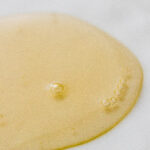 Is Neem Oil Safe for Pest Control on Succulents?
Is Neem Oil Safe for Pest Control on Succulents?However, fear not! In this comprehensive guide, we will delve into the causes of succulent leaf loss upon touch and provide you with practical tips on how to protect your succulents from pests and diseases.
Pests: The Culprits Behind Succulent Leaf Loss
Pests are a major cause of succulent leaf loss. These tiny creatures can wreak havoc on your succulent's leaves, causing them to wither and fall off. Here are some common pests that you should watch out for:
- Mealybugs: These fuzzy white insects are notorious for infesting succulents. They feed on the sap of the leaves, weakening them and leading to leaf loss.
- Aphids: These small, pear-shaped insects can quickly multiply and form colonies on your succulents. They suck the sap from the leaves, causing them to turn yellow and eventually drop off.
- Spider mites: These minuscule pests are barely visible to the naked eye. They create fine webs on the leaves and extract the sap, leaving behind yellow or brown spots and causing leaf loss.
To prevent succulent leaf loss caused by pests, regularly inspect your plants, especially the undersides of leaves where pests often hide. If you spot any pests, take immediate action to control their population. You can use natural remedies like neem oil or insecticidal soap, or opt for commercially available pest control products specifically designed for succulents.
Diseases: Another Culprit for Succulent Leaf Loss
In addition to pests, diseases can also lead to succulent leaf loss. These diseases are often caused by fungal or bacterial infections and can spread rapidly if not addressed promptly. Here are some common diseases that can affect succulents:
- Root rot: Overwatering or poorly-draining soil can lead to root rot, causing the leaves to become mushy and eventually fall off.
- Leaf spot: Fungal infections can cause leaf spot, characterized by brown or black spots on the leaves. As the infection progresses, affected leaves may wither and drop off.
- Stem rot: Stem rot occurs when the stem of a succulent becomes infected, often due to excessive moisture and poor ventilation. The affected stem may become soft and mushy, leading to leaf loss.
To prevent succulent leaf loss caused by diseases, it is crucial to provide your succulents with proper care and maintenance. Avoid overwatering and ensure that your succulents are planted in well-draining soil. If you notice any signs of disease, promptly remove the affected leaves or stems and treat the plant with an appropriate fungicide or bactericide.
By protecting your succulents from pests and diseases, you can significantly reduce the chances of succulent leaf loss upon touch. Remember to maintain a regular care routine, keep an eye out for any signs of trouble, and provide your succulents with the optimal growing conditions they need to thrive.
Provide proper airflow and ventilation to prevent leaf loss in succulents
 Could Succulent Balls Indicate a Disease?
Could Succulent Balls Indicate a Disease?One of the main causes of leaf loss in succulents upon touch is the lack of proper airflow and ventilation. Succulents thrive in environments with good air circulation, and when this is compromised, it can lead to leaf loss.
When succulents are grown in areas with poor ventilation, the air becomes stagnant, which can create a humid and damp environment. This excess moisture can cause the leaves to become soft and prone to damage when touched. Additionally, stagnant air can also promote the growth of fungi and bacteria, further contributing to leaf loss.
To prevent leaf loss due to poor airflow, it is important to provide adequate ventilation for your succulents. Here are some tips:
- Place succulents in areas with good air circulation, such as near windows or open doors.
- Use a fan to create a gentle breeze around your succulents, ensuring that the air is constantly moving.
- Avoid overcrowding your succulents, as this can limit air movement between plants.
- Consider using a well-draining soil mix that allows for proper airflow and prevents water from accumulating around the roots.
By ensuring that your succulents receive adequate airflow and ventilation, you can help prevent leaf loss and promote their overall health and vitality.
Avoid using harsh chemicals or cleaners near succulents to prevent leaf loss
When it comes to caring for succulents, one of the most common issues that plant enthusiasts encounter is leaf loss upon touch. It can be quite disheartening to see those beautiful plump leaves falling off, leaving your succulent looking bare and unhealthy. However, understanding the causes behind this phenomenon can help you prevent it from happening in the future.
1. Overwatering: One of the primary reasons for succulent leaf loss upon touch is overwatering. Succulents are adapted to survive in arid conditions and store water in their leaves and stems. When they receive too much water, their leaves can become waterlogged and prone to rot. This excess moisture can lead to the detachment of leaves with a gentle touch. To prevent overwatering, make sure you only water your succulents when the soil is completely dry, and always provide proper drainage for your pots.
 Can Tiny Black Bugs on Succulents Cause Harm?
Can Tiny Black Bugs on Succulents Cause Harm?2. Underwatering: On the other hand, underwatering can also cause succulent leaf loss. When succulents don't receive enough water, their leaves can become dehydrated and shriveled. This can make them more susceptible to falling off when touched. Be sure to establish a regular watering schedule for your succulents, allowing the soil to dry out between waterings but not letting it become bone dry.
3. Physical Damage: Sometimes, succulent leaf loss may simply be a result of physical damage. Accidental bumps, mishandling, or even pests can cause leaves to detach. It's essential to handle your succulents with care, avoiding any unnecessary touching or rough movements. Additionally, regularly inspect your plants for signs of pests and take appropriate measures to control them.
4. Lack of Light: Succulents thrive in bright, indirect sunlight. Insufficient light can weaken their leaves, making them more prone to falling off. Make sure your succulents receive at least six hours of sunlight per day. If you're keeping them indoors, place them near a south-facing window or use artificial grow lights to supplement their light requirements.
5. Nutrient Deficiency: A lack of essential nutrients can also contribute to succulent leaf loss. Ensure that your succulents receive adequate nutrition by using a well-balanced fertilizer specifically formulated for succulents. Follow the instructions on the fertilizer packaging to avoid over or underfeeding your plants.
Conclusion: By understanding the various causes of succulent leaf loss upon touch, you can take appropriate measures to prevent it. Remember to water your succulents correctly, provide sufficient light, handle them with care, and ensure they receive proper nutrition. With proper care, your succulents will flourish and maintain their beautiful foliage for years to come.
Provide sufficient space for succulents to grow and avoid overcrowding to prevent leaf loss
When it comes to succulents, providing them with sufficient space to grow is crucial in preventing leaf loss upon touch. Overcrowding can lead to a variety of problems, including limited access to sunlight and airflow, which can weaken the leaves and make them more prone to falling off.
By giving your succulents enough space, you allow them to spread their roots and grow without being cramped. This not only promotes healthier growth but also reduces the chances of leaves rubbing against each other, which can cause damage and eventual loss.
It is recommended to keep a distance of at least a few inches between each succulent when planting them in containers or gardens. This spacing allows for adequate air circulation, ensuring that the leaves remain dry and less susceptible to rot or fungal infections.
Additionally, providing sufficient space also includes regular repotting of your succulents. As they grow, their root systems expand, and the existing pot may become too small to accommodate their needs. Repotting them into larger containers ensures that their roots have enough room to spread, reducing the risk of leaf loss due to overcrowding.
Frequently Asked Questions
1. Why do succulent leaves fall off when touched?
When succulent leaves are touched, it can cause them to detach due to their natural defense mechanism. This helps the plant conserve energy and protect itself from potential damage.
2. Is it normal for succulent leaves to fall off easily?
Yes, it is normal for succulent leaves to fall off easily, especially when they are touched. Succulents have evolved to shed leaves as a way to propagate and survive in harsh environments.
3. Can overwatering cause succulent leaves to fall off?
Yes, overwatering can lead to succulent leaf loss. When the roots are constantly saturated, it can cause root rot, which in turn affects the health of the leaves and may cause them to fall off.
4. How can I prevent succulent leaf loss upon touch?
To prevent succulent leaf loss, it is best to avoid touching or handling the leaves unnecessarily. Additionally, ensure proper watering practices, provide adequate light, and avoid extreme temperature fluctuations, as these factors can contribute to leaf loss.
If you want to read more articles similar to The Causes of Succulent Leaf Loss Upon Touch: A Comprehensive Guide, you can visit the Pests and Diseases category.


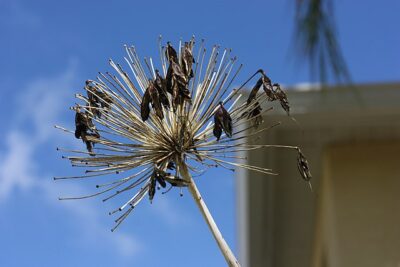
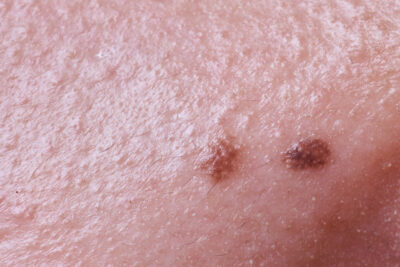
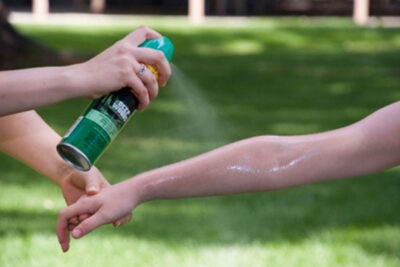

You Must Read